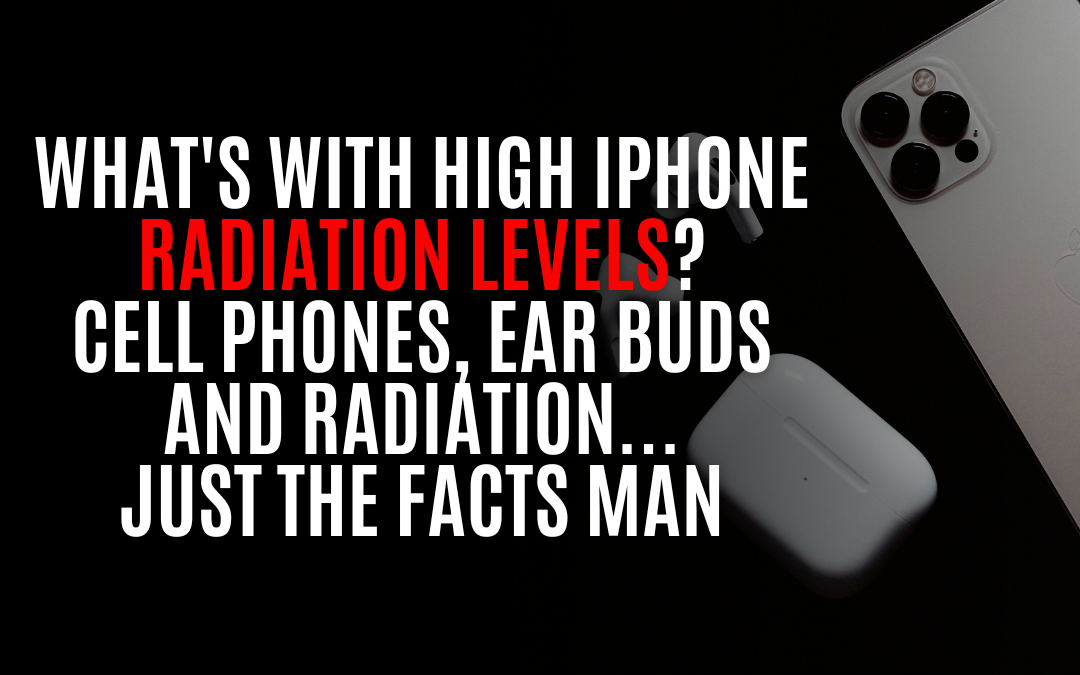What’s with the high iPhone “Radiation Levels”? It isn’t what you probably think it is. No nuclear power involved.
So, folks, listen up! I’m here to talk about the difference between ionizing and non-ionizing radiation when it comes to your cell phones. It’s important to know what you’re dealing with in order to make informed decisions about your health and safety.
Let’s start with ionizing radiation. This type of radiation is high-energy and can cause damage to cells by knocking electrons out of atoms. Examples of ionizing radiation include X-rays and gamma rays. They have enough energy to break chemical bonds in our bodies, which can lead to DNA damage and an increased risk of cancer.
Now what is non-ionizing radiation and why are governments getting their panties in a twist about it? Well, let me tell you it’s not something you need to be overly worried about when it comes to using your electronic devices.
So, what exactly is non-ionizing radiation? Well, it’s a type of electromagnetic radiation that includes things like radio waves, microwaves, and even the signals emitted by our beloved gadgets such as cell phones. 💻📱
The key thing to remember here is that non-ionizing radiation has *low energy levels*. It lacks the punch needed to knock electrons out or break chemical bonds in our bodies. 🥊💔 This means that while it may interact with biological tissues on some level (like heating them up slightly), its effects are generally harmless.
In fact, everyday sources of this type of radiation — like cell phones and Bluetooth earbuds — do not have the power or intensity capable of causing extreme damage. They simply don’t emit enough energy for us to worry about. 😅
In the news is the Apple iPhone 12 Pro due to a French Government Regulation. However, not to worry Apple iphones have been tested and meet the applicable Specific Absorption Rate (SAR) limits for radio frequency (RF) exposure. That is the rate at which the body absorbs RF energy. You can read more by clicking here.
Now let’s zoom in on those Bluetooth earbuds you mentioned. These nifty little devices use short-range radio waves within the frequency range called “Bluetooth.” 👂🎧 And guess what? Bluetooth falls under non-ionizing radiations too!
Using these wireless wonders won’t fry your brain cells or turn you into a walking microwave oven – they operate at very low power levels within an arm’s reach distance from your phone or other connected device.
Now I know we all love music pumping straight into our ears without being tethered by wires (I certainly do!), but if there were any significant health risks associated with using Bluetooth earbuds regularly, we’d definitely hear about them more often! So enjoy your tunes wirelessly without stressing over invisible dangers lurking behind every bass line. 🎶✨
Remember, your small electronic devices aren’t nuclear reactors emitting ionizing radiation that can cause severe damage. They’re just regular, low-power-emitting gadgets we’ve come to rely on in our daily lives.
So chill out, crank up the tunes, and make a phone call or two – your electronic companions aren’t here to harm you! 🎧📞 And if anyone tells you otherwise, well…like the government or media talkin’ heads, they just might be stuck in the past with their tin foil hats! 😜
Stay informed and keep enjoying your tech-savvy life! 🤓✌️
Still not convinced? Check these out:
- https://www.zdnet.com/article/worried-about-iphone-12-radiation-heres-what-you-need-to-know/
- https://globalnews.ca/news/9960733/iphone-12-radiation-canada-france/
- https://www.wired.com/story/the-iphone-12-isnt-the-only-phone-to-fail-frances-radiation-test/
- https://techcrunch.com/2023/09/15/apple-to-release-software-update-for-iphone-12-to-solve-radiation-concerns/


